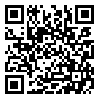Volume 12, Issue 1 (2012)
QJER 2012, 12(1): 59-85 |
Back to browse issues page
Download citation:
BibTeX | RIS | EndNote | Medlars | ProCite | Reference Manager | RefWorks
Send citation to:



BibTeX | RIS | EndNote | Medlars | ProCite | Reference Manager | RefWorks
Send citation to:
Emami K, Olia M. Estimating Output Gap and the Effects on Inflation Rate in Iran. QJER 2012; 12 (1) :59-85
URL: http://ecor.modares.ac.ir/article-18-8049-en.html
URL: http://ecor.modares.ac.ir/article-18-8049-en.html
1- Assistant Professor of Economics, Islamic Azad University, Science and Research Branch of Tehran.
2- M.A. in Economics, Islamic Azad University, Science and Research Branch of Tehran
2- M.A. in Economics, Islamic Azad University, Science and Research Branch of Tehran
Abstract: (7759 Views)
The purpose of this paper is estimating output gap as one of the variables that affect inflation in the Iranian economy. Therefore, using seasonal data from spring 1989 to winter 2006 and through Hodrick-Prescott filtering techniques the potential output and output gap are estimated and then ordinary least squares approach has been used to find out the relationship between inflation and output gap. Variables such as exchange rates, price index of imported goods, and the adjusted output gap as real variables and expected future inflation have been used for estimating the model considering the facts and theories in the Iranian economy. This test has been done through the rational expectation hypothesis of an enterprise and using a new Keynesian Phillips curve. The research findings verify the new Keynesian opinion. Thus, in Iran where the average rate of inflation in the period, is 19.6% and therefore considered among the countries with galloping rate of inflation, Phillips curve has been estimated with a relatively steep slope. In the long run, the steep Phillips curve according to Keynesians implies that in case of demand shock, the production will increase and compared with the new classic models it has less impact on inflation.
Keywords: C22, E31, Inflation rate, E10 E31, output gap, Hodrick-Prescott filtering, The New Keynesian Phillips curve, The HEGY Unit Root Test, Perron Unit Root Test.
JEL Classifications: C22, E10
Received: 2011/04/18 | Accepted: 2011/10/16 | Published: 2012/05/6
| Rights and permissions | |
 |
This work is licensed under a Creative Commons Attribution-NonCommercial 4.0 International License. |







